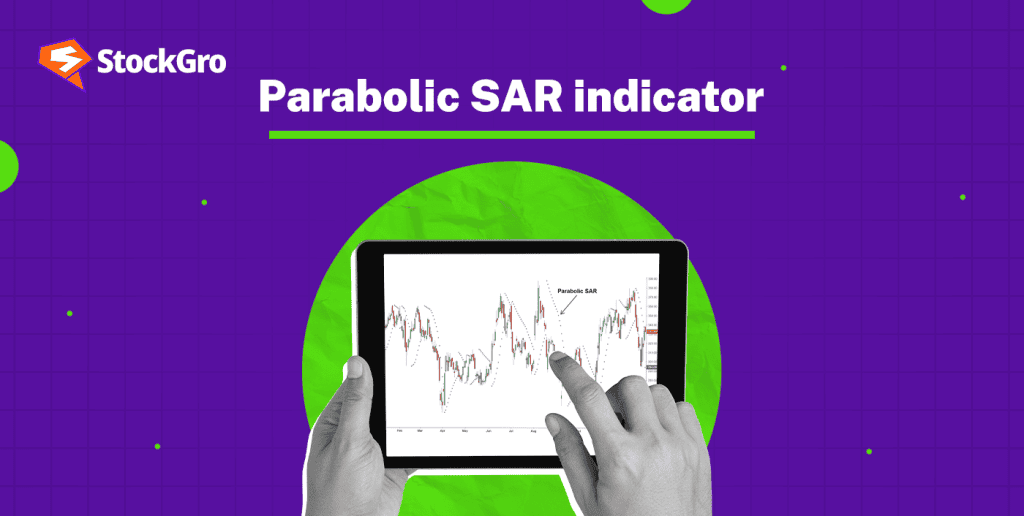
Trading in the stock market can feel daunting, irrespective of its rewards. There is a constant requirement to interpret market tendencies and sentiments to best time the entry and exit points.
But, the most important question that comes to the mind of any trader is how to interpret these conditions and make reliable future decisions.
Fundamental and technical analysis are the two broad categories of stock analysis. These methods enable traders to make financially prudent decisions.
Fundamental analysis helps measure the intrinsic worth of a company stock. Metrics like return on equity (ROE) and earnings per share (EPS) are used for this analysis. Intrinsic value refers to the perceived value of a particular company stock and is thus based on the financial statements of a company.
Technical analysis emphasises more on marketplace reaction to a stock. Hence, it depends more on statistical trends of the price and volume of stock traded rather than a company’s financial performance.
Parabolic SAR is a method that forms an integral part of the technical analysis.
Also read: Stockbrokers Contract Notes: What You Need to Know
What is parabolic SAR?
A very commonly used phrase says, “History repeats itself”. This indicator follows this as a rule of thumb.
Formulated by J. Welles Wilder, the PSAR determines the trajectory of market trends and probable reversal points. SAR refers to stop and reverse. This indicator uses past data points to make an informed indication about the possible future movement.
Also known as PSAR, this tool helps traders make informed trading decisions by enabling a planned entry and exit.
Calculation of the SAR indicator
The Parabolic SAR indicator uses extreme price (EP) and acceleration factor (AF) for calculations. It is non-negotiable to comprehend these in detail before moving on to the formula of PSAR.
Extreme price
EP refers to the highest and the lowest price points that a stock hits during its upward trend and downward trend, respectively. It is updated every time a new extreme price is hit.
Acceleration factor
AF refers to the rate at which the indicator moves towards a price. The indicator here refers to SAR itself. The acceleration factor measures the sensitivity of SAR to price movements by controlling the rate at which SAR values move towards extreme price points as the trend progresses.
The AF is fixed at 0.02 by default and rises by 0.02 with each subsequent EP, up to a maximum of 0.20.
The calculation of parabolic SAR differs for uptrend and downtrend.
During upward trend
PSAR = Prior PSAR + Prior AF (Prior EP – Prior PSAR)
Note the definition of PSAR. It uses past price data to make an informed calculation on the upcoming trend. Therefore, in the formula of both downtrend and uptrend, you use current values which are indicated by the word “prior”, to calculate the SAR indicator in question.
During downward trend
PSAR = Prior PSAR – Prior AF (Prior PSAR – Prior EP)
Notice the difference between the two formulas. During an upward trend, acceleration is added because the prices are supposed to change in an upward trajectory. Similarly, in case of a downward trend, the AF is subtracted because the prices are supposed to move in a downward direction.
Also read: Mastering Real-Time Stock Data Analysis
Parabolic SAR trading
The parabolic SAR equation is used to determine the placement of dots beneath the increasing trendline or over the descending trendline. Depending on preference, one may join the dots with a line. The series of dots represents a security’s present price movement.
There are two key points necessary to remember. When PSAR dots are below the price, it indicates a bullish trend. It indicates a change from a downward price movement to an upward price movement. Similarly, when PSAR dots are over the price, it illustrates a bearish trend. The price trajectory is projected to shift from an uptrend to a downtrend.
Depending upon traders’ trading style, they can make buy or sell decisions. When employing the PSAR, traders often purchase a stock if the dots shift under the candlestick bars because it indicates an uptrend. The traders purchase the asset in question in expectation of selling it for a greater price. Moreover, traders sell or short-sell if the dots are over the candlesticks, indicating a downtrend.
Interestingly, PSAR moves even when there is no price change, primarily due to the continuous change in AF and EP. PSAR becomes a non-negotiable tool in case of a highly volatile stock with continuous movements.
However, in the case of a market with little to change, there will be a heap of data from the SAR indicator that can result in bad trading decisions. Therefore, PSAR should always be used along with other technical analysis tools.
Also read: Making Money in Stocks: A Beginner’s Guide to Investing
Parabolic SAR vs moving average vs pin bar candlestick
The primary difference between SAR and the moving average is in their formula. While MA looks at the average prices over a period of time, SAR uses extreme prices or EP.
The difference between SAR and pin bar candlestick is more fundamental. The pin bar candlestick is merely a statistical representation of the current change in price trend. PSAR uses historical data to gauge future price trends and reversals.
Conclusion
This journey of understanding the SAR indicator started with a little detour in technical and fundamental analysis. A trader needs to keep in mind that no indicator or metric on its own is capable of accurately foretelling the trajectory of the price movement. Fundamental analysis and technical analysis along with its various need to be used in complement to one another for making prudent trading decisions.
Narrowing down to SAR, although it is a great indication of upcoming trends and movements, any investor should not solely rely on it. The permutation and combination of different indicators along with their position on the relevance list depend on the market and trader sentiment. SAR is more useful in volatile markets as compared to a steady one.
FAQs
- What is the meaning of PSAR?
J. Welles Wilder created the Parabolic SAR indicator, which indicates the direction of market trends and probable reversal points. The acronym SAR stands for Stop and Reverse. This indicator analyses historical data to provide an informed prediction about potential future movement. This tool enables traders to make more educated trading decisions by allowing for scheduled entry and exit points.
- Is PSAR a good indicator?
Although Parabolic SAR is an excellent indicator of future trends and movements, no investor should rely completely on it. The permutation and combination of distinct indicators, as well as their position on the relevant list, are determined by market conditions and trader mood. SAR is more beneficial in turbulent markets than in steady ones.
- What is the formula for the PSAR indicator?
The SAR indicator analyses historical price data to generate an informed prediction about the forthcoming trend. As a result, in both the downtrend and uptrend formulas, we employ current values denoted by “prior” to construct the relevant SAR indicator.
The computation of parabolic SAR differs for both upswing and decline.
During an ascending trend
PSAR = Prior PSAR + Prior AF (Prior EP – Prior PSAR)
During a descending trend
PSAR = Prior PSAR – Prior AF (Prior PSAR – Prior EP)
- What is PSAR indicating bullish reversal?
The PSAR indicator determines future price movement based on past data. PSAR dots below the price suggest a positive trend. It signifies a shift from a downward to an upward price trend. Similarly, PSAR dots above the price suggest a negative trend. The price trajectory is expected to transition from an upturn to a downturn.
- Is PSAR a lagging indicator?
A lagging indicator refers to a tool which showcases past trends or occurrences. The PSAR indicator is a lagging indicator that may assist a trader in establishing a trailing stop loss or deciding on entry or exit points depending on how asset values tend to remain within a parabolic curve during a strong market trend.

